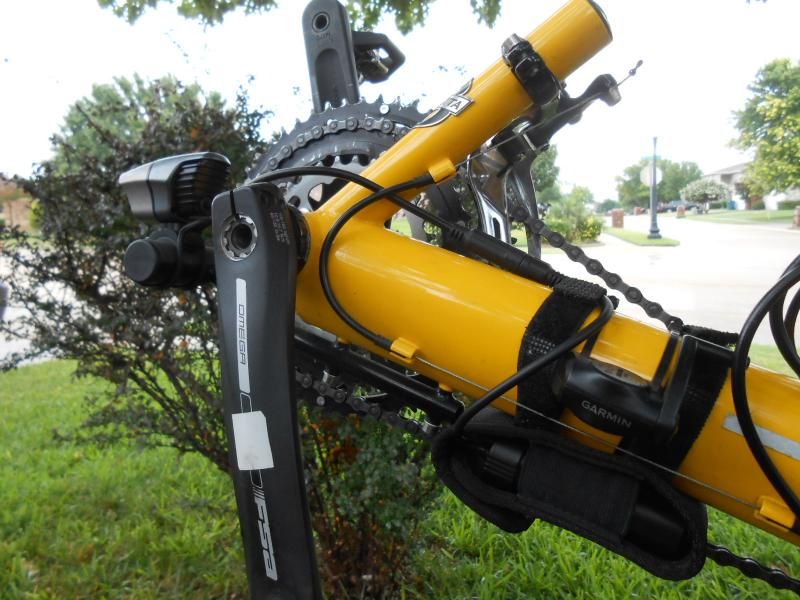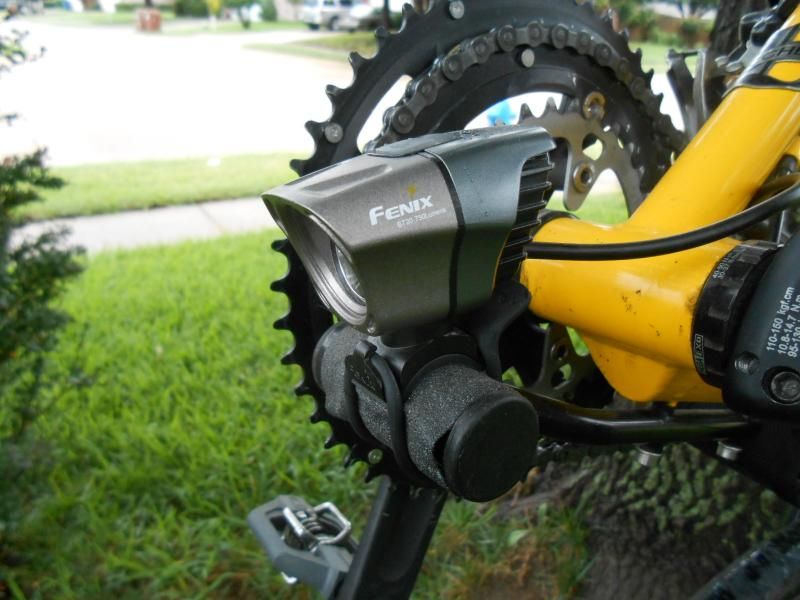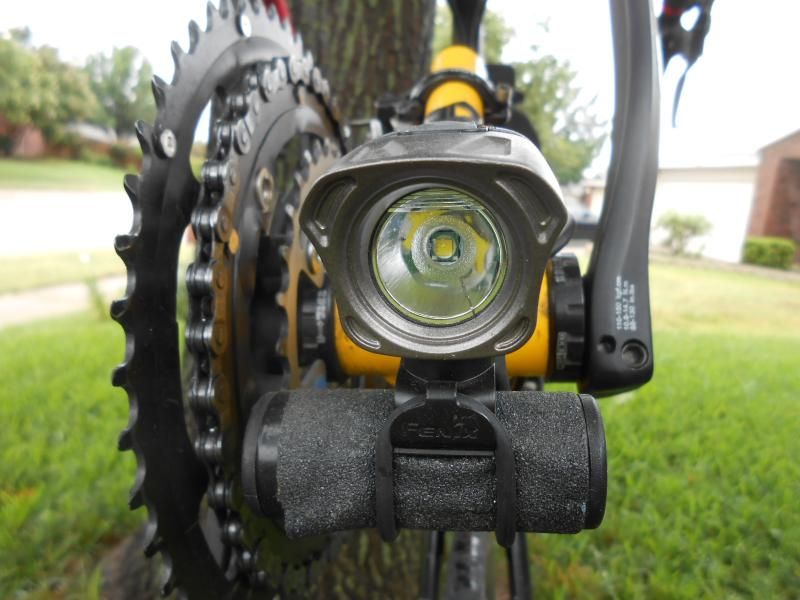I’m finally happy with a bike light, (and this from someone
who spends way too much time and money chasing the next best thing..)
I’ve been around bicycles and bike lights since the days of
the old Wonder Lights.
I’ve been through
them, the old Cateye HL200, homebrewed contraptions, (an old VHS camcorder
flood light), Nightrider & Nightsun incandescent lights, a Jet light with
NiMH batteries, A Nightrider Pro 600 LED, and the monster flamethrower Dinotte1200L which is a fantastic light by the way.
However they almost all suffered from the same problem,
proprietary batteries. Get a bad cell
and the whole battery pack was toast.
You either had to get an expensive, (75% of the cost of the light) new
battery, or crack the battery pack and cobble something together and see if it
worked. Even my much loved Dinotte’s
suffer this same fate, (which explains the several Dinotte batteries laying
around the house with big X’s marked on them).
Oh how I wished for a good solid light that had user replaceable
batteries.
Seems the nice folks at Fenix lights heard my wishes. They’ve made some really solid and killer
flashlights for a few years now and have a stellar reputation. Recently they released a couple of bike
lights that caught my eye, the BT10 & the BT20.
The BT10 uses AA batteries and is on the
short list for the kid’s bikes when we gear up for the 2015 Bike Across
Kansas. I like the fact it runs on
easily replaceable AA batteries and we won’t have to worry about daily charging
or bad cells during the eight days of riding.
The advertised rating on the lights shows 320 lumens or so, this should
be more than enough for a daytime “SEE ME” blinky and should also be useful
while camping out and navigating in the dark. Fenix are you listening? I need a deal on three of the BT10s, just saying...
Since I spend my weekday ride time riding in the early
morning, usually well before first light, I wanted a bit of a brighter light to
light up the road. This is where the Fenix
BT20 fits my needs. It uses 2
rechargeable 18650 lithium ion batteries and cranks out an advertised 750
lumens of light. This light is bright
enough it illuminates the suburban roads I ride extremely well. It’s more than enough light to spot out the
pot holes and rough patches at even downhill speeds. It’s got a bit of side spill to it which
works well to spot out the local wildlife getting ready to make that kamikaze
dash for under your front wheel, (the local rabbits and squirrels love to do
that, even the occasional possum). The
light has four basic modes, low, medium, high, turbo and strobe. My usual early morning rides are generally
just over an hour and I find I have plenty of battery capacity to run it on
high, on strobe, I’ve ran it well over three hours without an issue. I’ve yet to give it a runtime test on turbo
or the low and medium settings. One of
these mornings I’ll run it on turbo just to see how it does. I expect to get flashed by more cars however
as I already get drivers flicking their high beams at me on high, (and this is
with the light angled down).
A quick note on the strobe pattern for the BT20, it is not
just a blinky. It has a repeated slow
blink pattern then a rapid blink pattern.
One of the things I’ve noticed watching local cyclists is how quickly a
steady on/off on/off blinky pattern fades into the background and is no longer
noticed. The changing blink rates of the
BT20 strobe pattern catch and hold the eyes better in my humble opinion.
The light pattern itself is nice and clean, a clear center
light pattern, (no hot spot), well defined beam, and good/useful side
spill. I’ve ran the range from spot
light to flood light and next to the Dinotte 1200 this has one of the best useable
beam patterns that I’ve came across. The
lens is designed to refract light that would normally be spilled up, (a not
useful direction in a bike light) down immediately in front of the bike, (I
guess to spot those pot holes you didn’t pay attention to).
The battery box is well thought out and appears to be pretty
weather proof, but with the drought here in Texas and my lack of willingness to
ride in the rain, I’ve yet to test that out.
The battery compartment opens easily via a thumb screw; pops open and
inside are the two batteries. Since I
already own a smart charger for lithium ion batteries all I have to do to
charge the light is simply pop the batteries in charger and away I go. Please do note though, if you use
rechargeable lithium ion cells, make sure they are from a quality manufacture
and include a protection circuit to prevent them from overheating and suffering
as the industry calls it, “spontaneous vent with flame”. The batteries provided with the light are
good quality and have the built in protection.
I’d much rather have my light working properly than go riding down the
road and have the front of my bike catch fire.
Current street price for the BT20 is running around $90,
shopping around finds some variations and coupons, well worth the price if
you’re looking for a really good bike light.







No comments:
Post a Comment